The Cinderella Effect; Boosting Sales with Repurposed Products
In today’s world, sustainability and reducing waste are becoming increasingly important. One way to achieve these goals is by repurposing old products into new, functional items. This blog post is about the Cinderella effect. Not the fairy tale but a method for boosting sales of sustainble products.
A recent study by Bernadette Kamleitner, Carina Thürridl, and Brett A.S. Martin sheds light on how the concept of “identity salience” can impact consumer demand for repurposed products.
What is Identity Salience?
Identity salience refers to the emotional connection that consumers have to an item based on its past use or history. In other words, it’s the story behind the product that gives it meaning and significance. Something that consumers can relate to like everyday househould items.
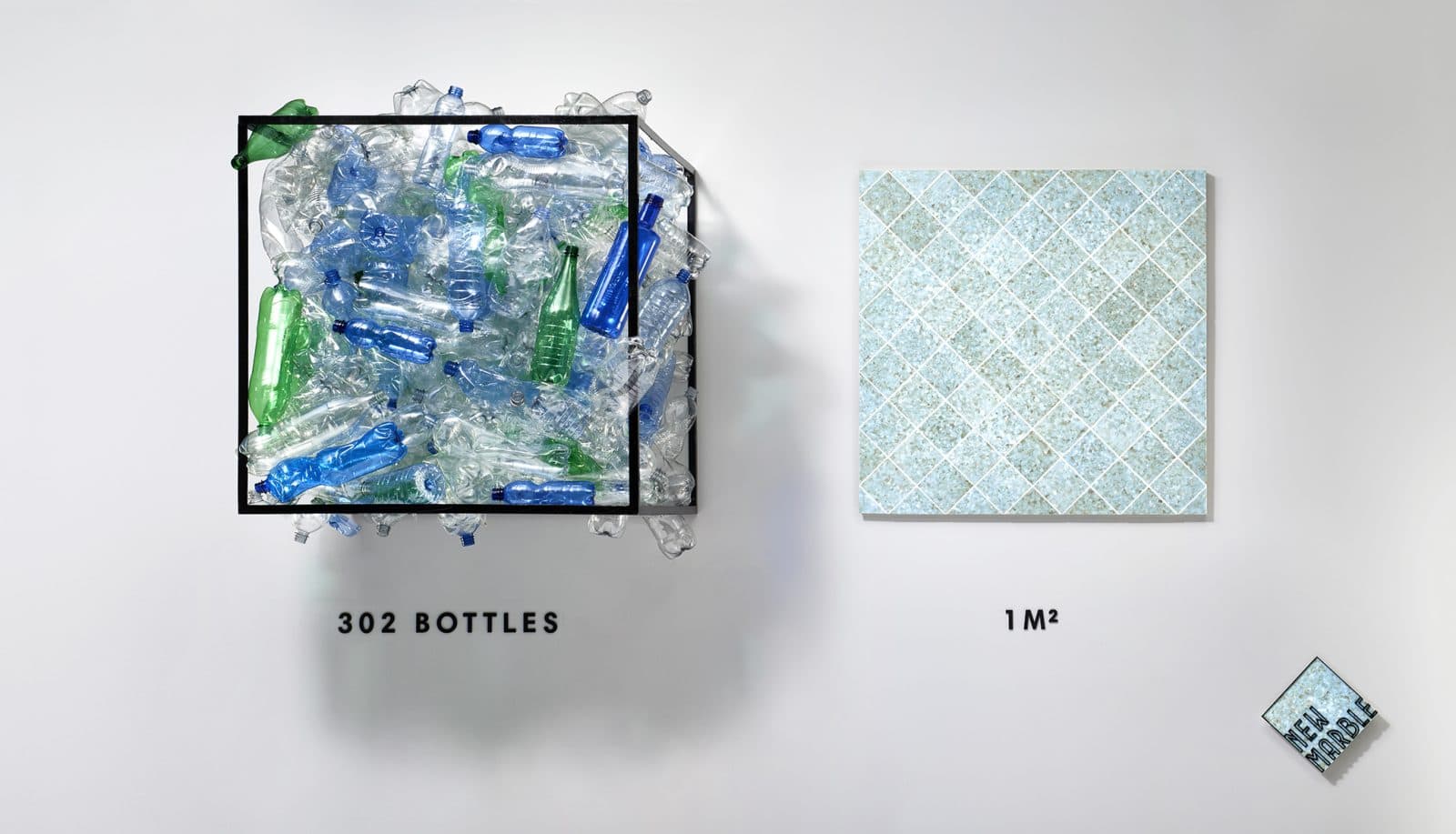
Wall tiles made from plastic bottles
Key insights
The authors of the study researched the how it would affect consumer demand. Let’s examine the research that explores this idea and evaluate its impact on individuals’ buying behaviors:
1. Repurposed vs. Newly Manufactured Chairs
The first experiment involved showing participants two identical chairs, one labeled as a repurposed item and the other as newly manufactured. The results were clear: participants were willing to pay an average of 10% more for the repurposed chair compared to the newly manufactured chair. This shows that even a simple labeling change can increase demand for repurposed products.
2. Traditional vs. Repurposed Coffee Mugs
The second experiment compared a traditional coffee mug with a repurposed coffee mug made from a used beer stein. Participants were willing to pay an average of 22% more for the repurposed coffee mug, further demonstrating the impact of identity salience on consumer demand.
3. Repurposed Products from Well-Known Brands vs. Less-Known Brands
The third experiment looked at how the brand of the original item might affect consumer demand for repurposed products. Participants were shown two types of repurposed products: one made from a well-known brand (such as Nike or Apple) and one made from a lesser-known brand. The results were significant, with participants willing to pay an average of 26% more for the repurposed product made from a well-known brand.
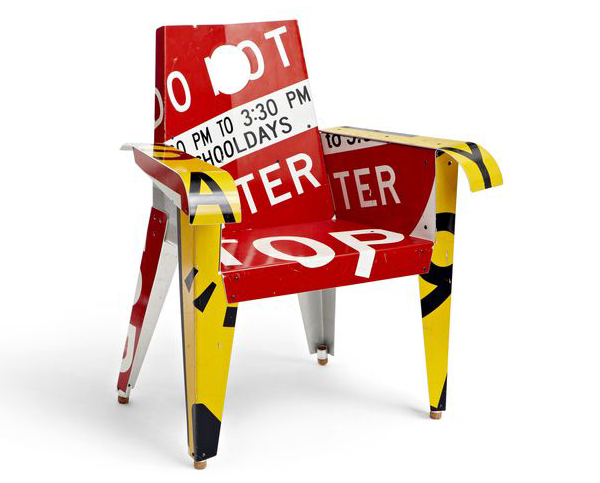
Increased demand
The results of these experiments clearly show that the Cinderella effect can significantly increase consumer demand for repurposed products. The level of demand is influenced by the emotional connection to the original item, as well as the brand of the original item. And the good news is, there are endless ways to repurpose.
4 takeaways
At Better Future Factory we embrace the Cinderella effect and it’s a key element of our design approach. We apply this also for our recycling projects. Our 4 key takeaways for applying the Cinderella effect are:
1.
Create an easy to understand overview picture or video frame where the audiance can see the former product and the new product together (e.g. Old PET bottles becomes wall tiles). This storytelling through images and videos make people immediatly understand the narrative.
2.
Explain the transformation with concrete numbers or examples that people can relate to e.g this wall is made from 792 plastic bottles.
3.
Using the original color of the waste stream. So the final product can be related to its previous life.
4.
Add a product passport which shows the different origins of the materials.
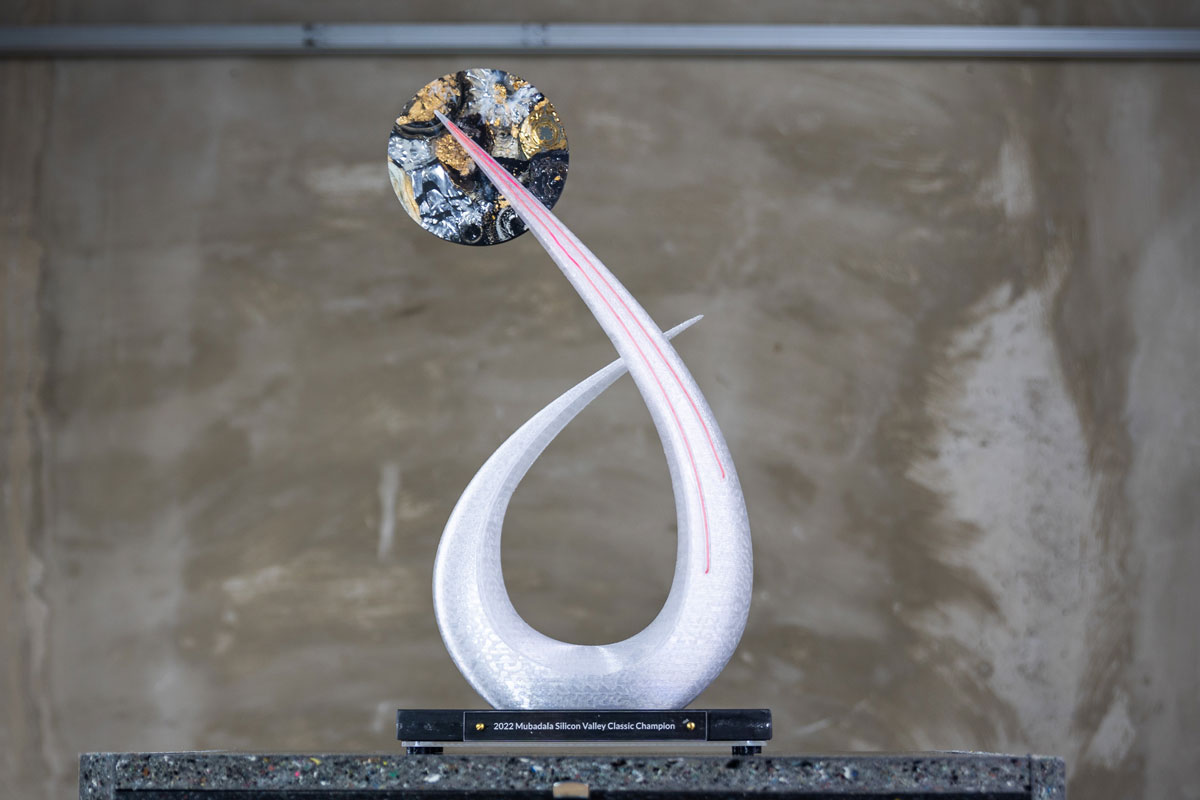
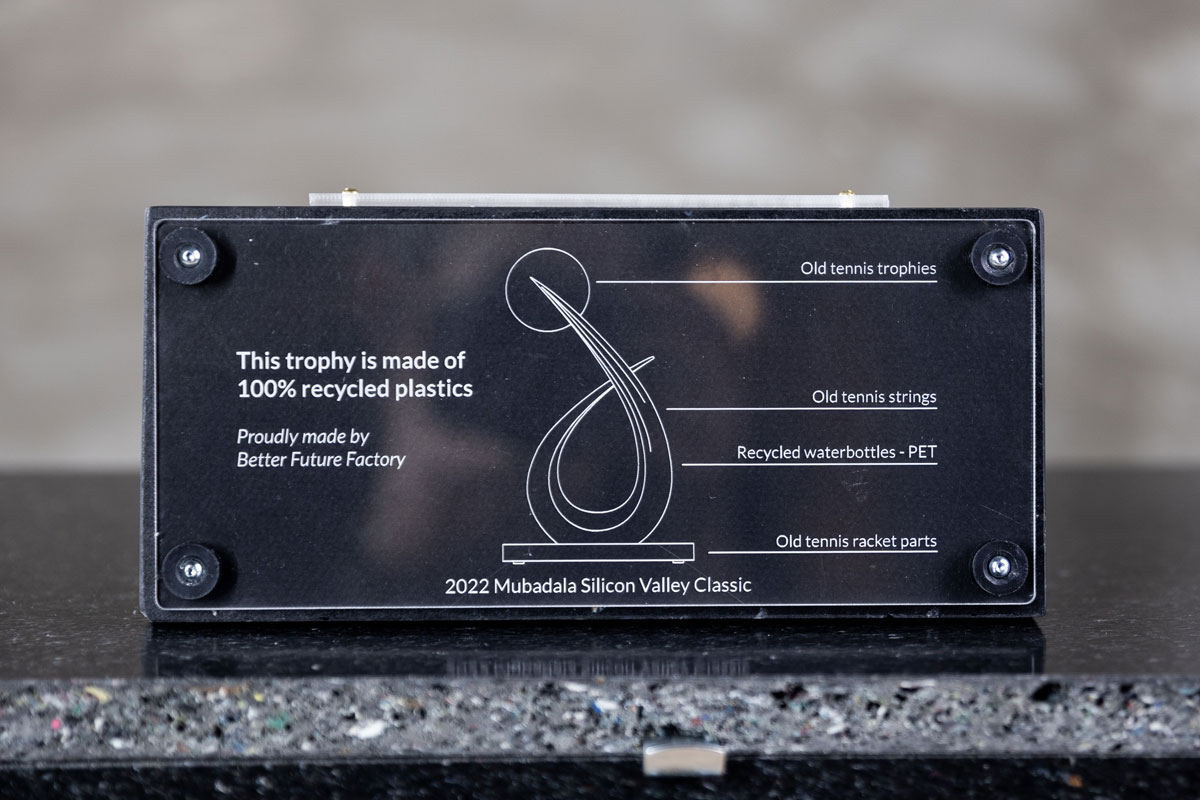
Material origin overview for a trophy made of old tennis racket parts
In practise
Based on the information presented above, we will show you how we integrate this into our day-to-day operations.
From PET bottle to wall tile
Transforming plastic PET bottles into fleece sweaters and yarn for t-shirts is something that has been around for some time now. But transforming a PET bottle into a wall tile is something new. We’ve developed the technique for this inhouse and it creates a marble like tile. That’s why we call it New Marble. The process uses the plastic bottles from the trash in countries where there is no recycling system in place, like developing countries. Building materials (e.g. beams, nuts and bolts, flooring and tiles) are often in great demand in such places. This tile can be used in and around the house and people love the marble effect. In Europe architects love the narrative of the tile and want to make a sustainable kitchen or bathroom.
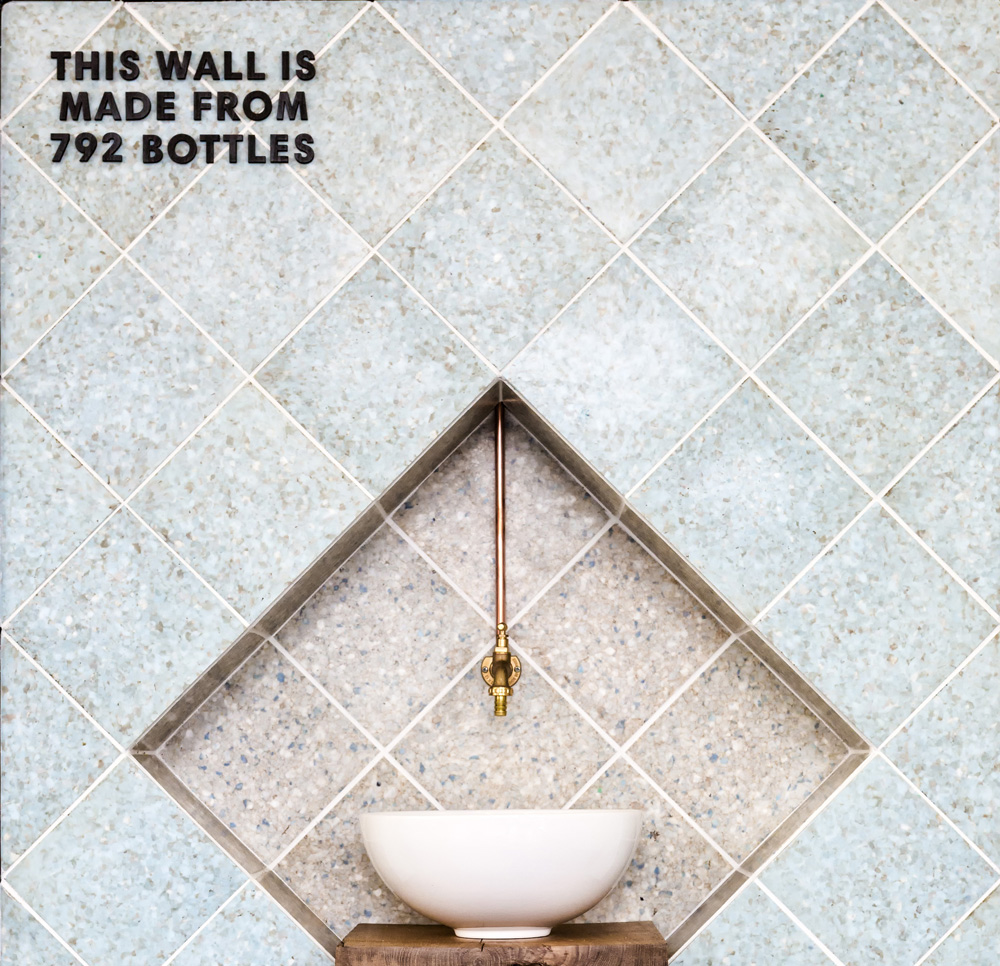
The amount of bottles is something people easy can relate to
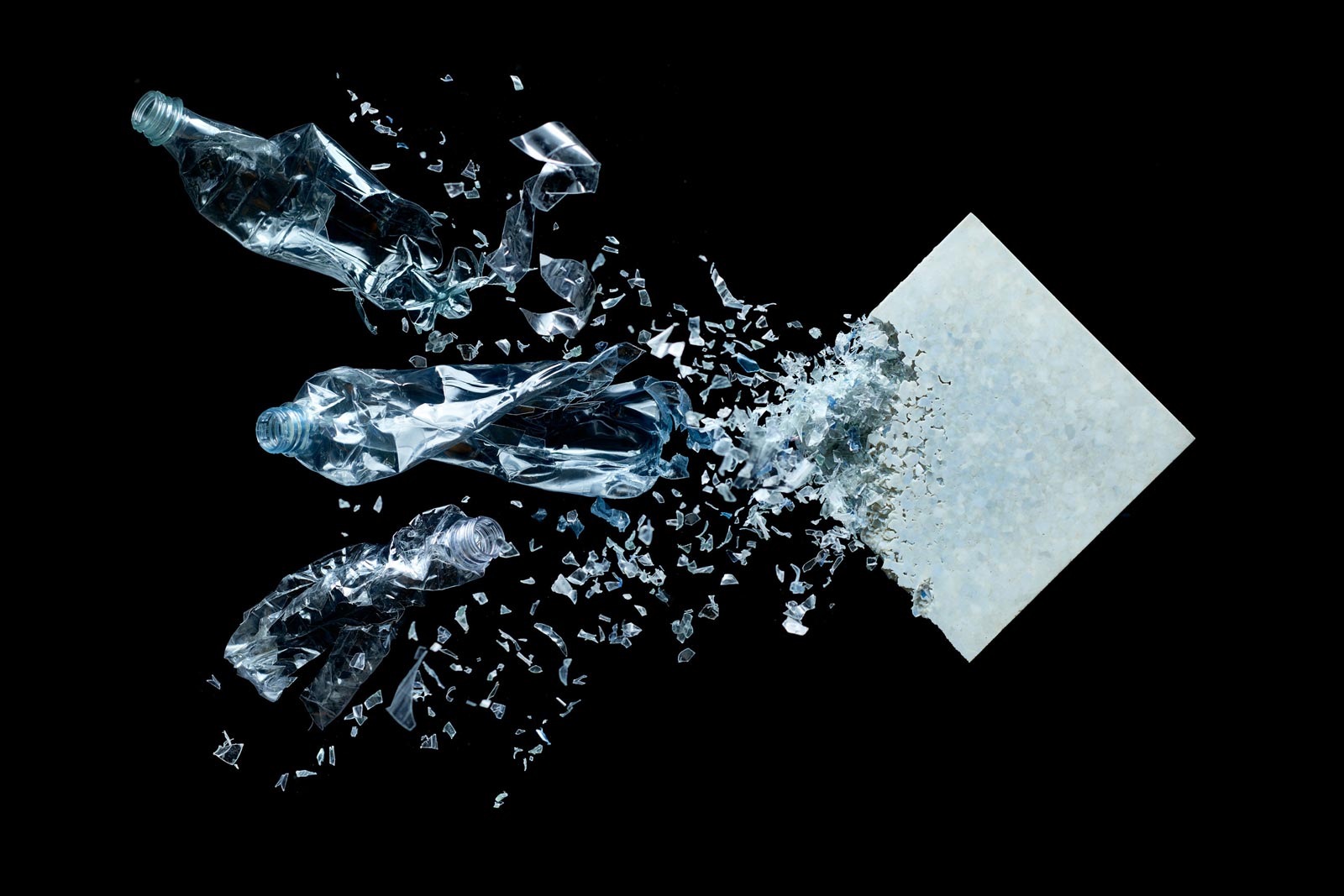
A more “arty’ way of showing the transformation process
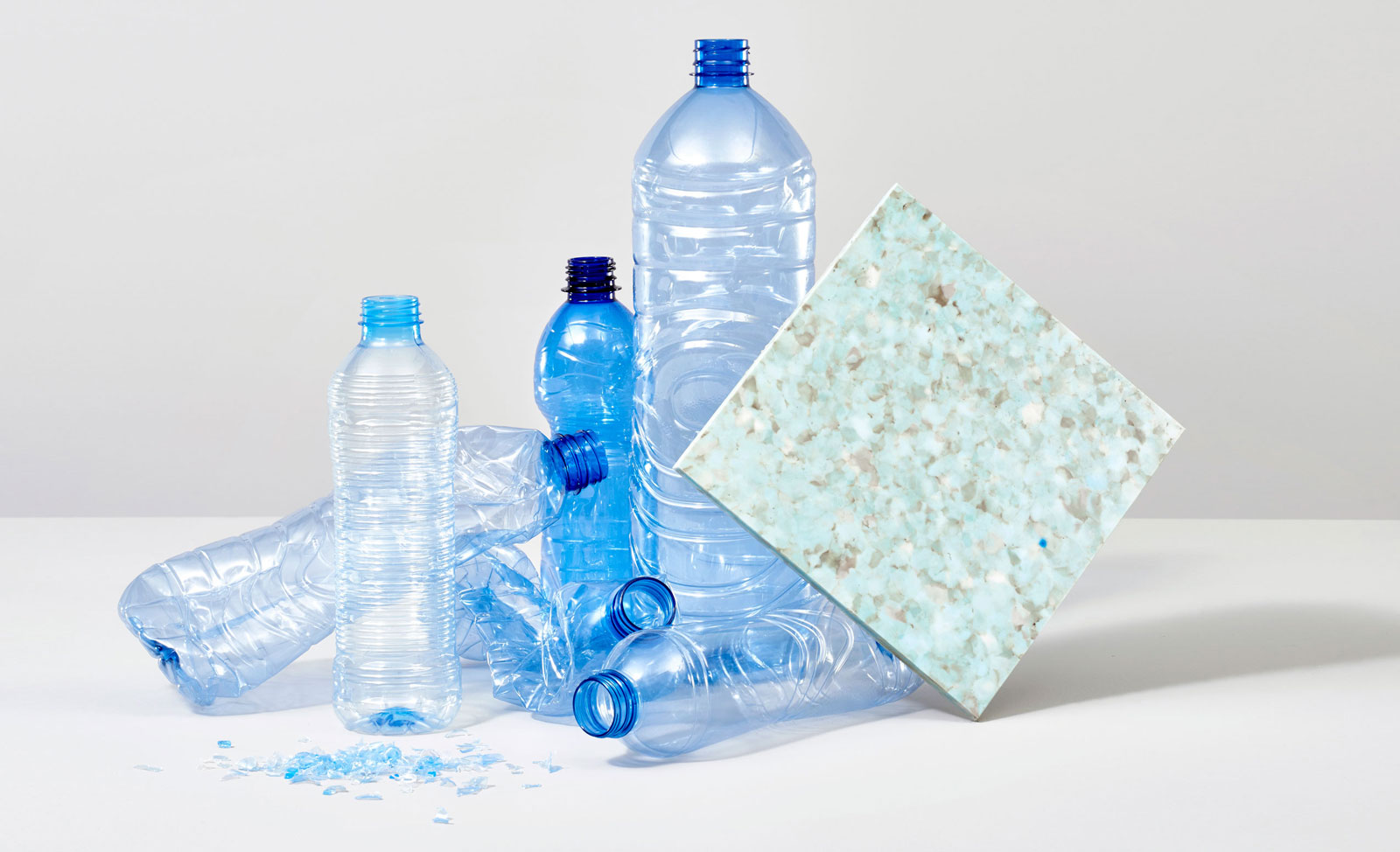
Blue bottles become a blue tile
From old plastic filing folder to office art work
How to make a new object from an old plastic folder which was used for filing? That was the initial challenge from Dutch insurance company Onderlinge based in The Hague. As a bonus they would like to have it around in their new office as a storytelling tool to boost sustainable behavior. We transformed thousands of plastic folders into a hanging artwork in the middle of their new office. Which from the bottom looks like the logo of the company and from the side on the first floor looks like a human head which represents their slogan “putting the human aspect central in our work”. A great way to show your employees and visitors you care about sustainability with a tangible product.

File folders are cut into small circles, which form a “pixel”
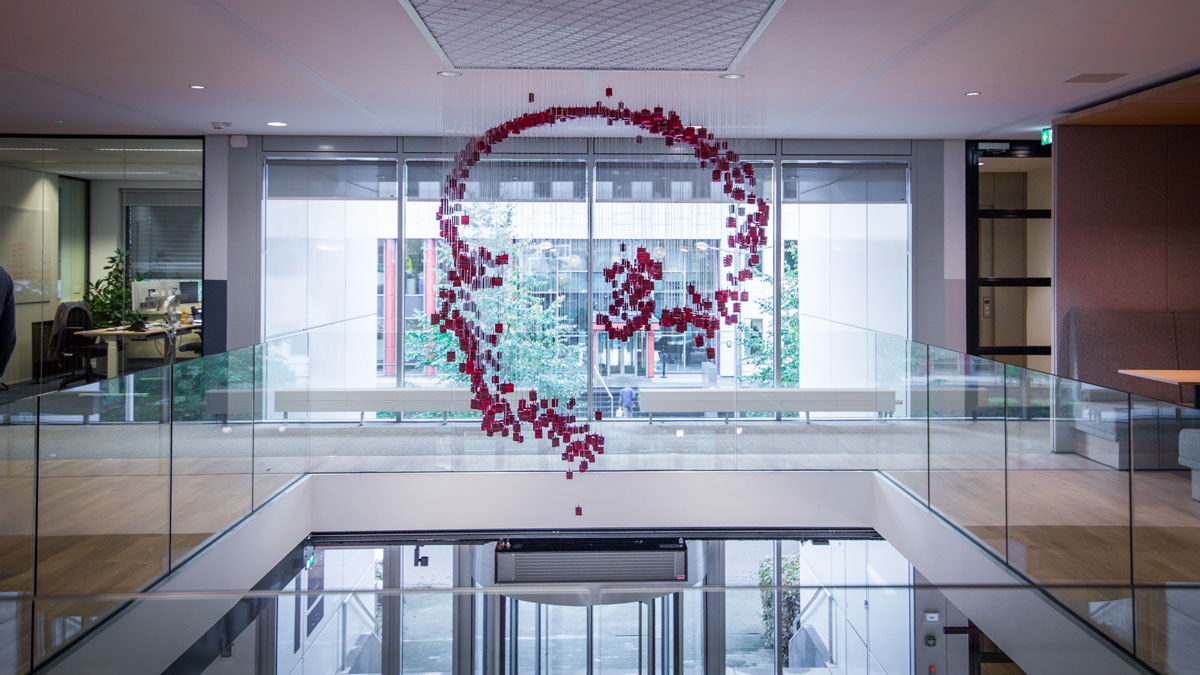
The side showing a human head shape

From the bottom is shows the company logo, two hands shaking
Sustainable marketing 2.0
Brands can increase demand for their repurposed products by emphasizing the emotional connection and history of the original item. This is particularly relevant in the case of repurposed plastic products, as consumers may be more likely to choose a product that has been given a new lease on life over a new, less sustainable option. By promoting the story behind the product, brands can tap into the power of the afterlife effect and create products that are both sustainable and in high demand.
